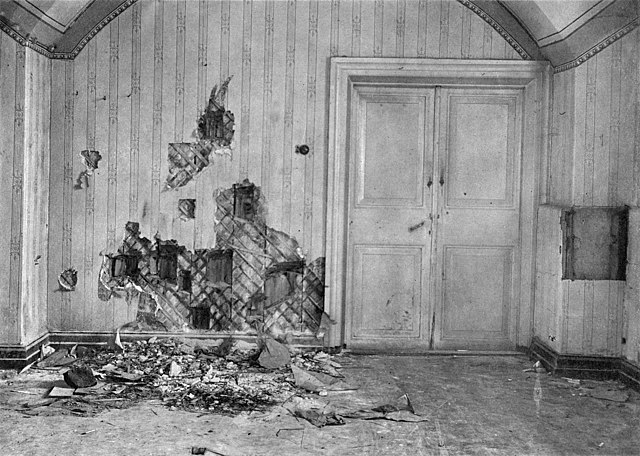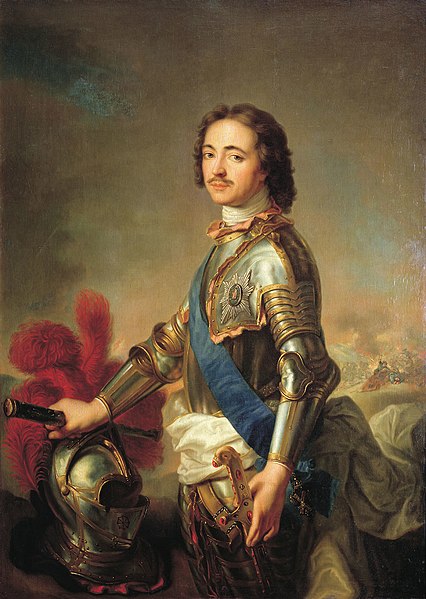Murder of the Romanov family
The Russian Imperial Romanov family were shot and bayoneted to death by Bolshevik revolutionaries under Yakov Yurovsky on the orders of the Ural Regional Soviet in Yekaterinburg on the night of 16–17 July 1918. Also murdered that night were members of the imperial entourage who had accompanied them: court physician Eugene Botkin; lady-in-waiting Anna Demidova; footman Alexei Trupp; and head cook Ivan Kharitonov. The bodies were taken to the Koptyaki forest, where they were stripped, mutilated with grenades to prevent identification, and buried.
The basement where the Romanov family was killed. The wall had been torn apart in search of bullets and other evidence by investigators in 1919. The double doors leading to a storeroom were locked during the murders.
Nicholas II, Tatiana and Anastasia Hendrikova working on a kitchen garden at Alexander Palace in May 1917. The family was allowed no such indulgences at the Ipatiev House.
Ipatiev House, with the palisade erected just before Nicholas, Alexandra and Maria arrived on 30 April 1918. On the top left of the house is an attic dormer window where a Maxim gun was positioned. Directly below it was the tsar and tsarina's bedroom.
The Church of All Saints in 2016 (top left), where the Ipatiev House used to be. Voznesensky Cathedral is in the foreground, where a machine gun was mounted in the belfry aimed at the tsar and tsaritsa's bedroom on the southeastern corner of the house.
The Russian Empire, also known as Imperial Russia or simply Russia, was a vast realm that spanned most of northern Eurasia from its proclamation in November 1721 until its dissolution in March 1917. At its height in the late 19th century, it covered about 22,800,000 square kilometres (8,800,000 sq mi), roughly one-sixth of the world's landmass, making it the third-largest empire in history, surpassed only by the British and Mongol empires; it also held colonies in North America between 1799 and 1867. The empire's 1897 census, the only one it conducted, found a population of 125.6 million with considerable ethnic, linguistic, religious, and socioeconomic diversity.
The Victory at Poltava, painted by Alexander von Kotzebue in 1862
Peter the Great officially proclaimed the Russian Empire in 1721 and became its first emperor. He instituted sweeping reforms and oversaw the transformation of Russia into a major European power. Painting by Jean-Marc Nattier, 1717.
Empress Catherine the Great, who reigned from 1762 to 1796, continued the empire's expansion and modernization. Considering herself an enlightened absolutist, she played a key role in the Russian Enlightenment (painted in the 1780s).
1764, Rouble Catherine II ММД - Krasny Mint








